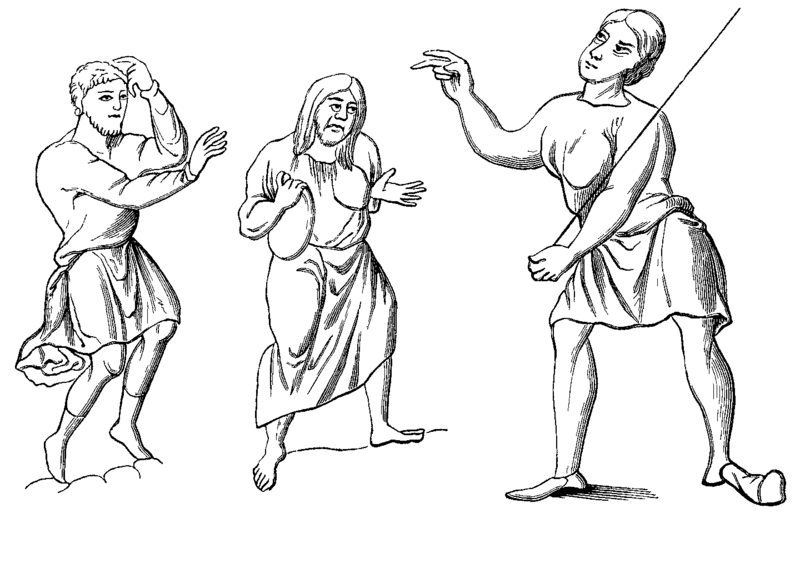|
ESNE (EZ-nee)
Old
English designation for a member of the lowest class: serf
Common
clues: Feudal serf; Anglo-Saxon slave; Medieval underling;
Low-level laborer of old; Crossword worker?; Slave to
crosswords?; Anglo-Saxon drudge; Peon of yore
Crossword
puzzle frequency:
once a year
News:
Remember
why laborers have the rights they do
Video:
System
of Feudalism

Costumes
of slaves or serfs, from the sixth to the twelfth centuries,
collected by H. de Vielcastel from original documents in European
libraries.
Serfdom
is the socio-economic status of peasants under feudalism, and
specifically relates to Manorialism. It was a condition of
bondage or modified slavery seen primarily during the Middle Ages
in Europe. Serfdom was the enforced labour of serfs on the fields
of landowners, in return for protection and the right to work on
their leased fields.
Serfdom
involved work not only on fields, but various agriculture-related
works, like forestry, transportation (both land and river-based),
crafts and even in production. Manors formed the basic unit of
society during this period, and both the lord and his serfs were
bound legally, economically and socially. Serfs were labourers
who were bound to the land; they formed the lowest social class
of the feudal society. Serfs were also defined as people in whose
labour landowners held property rights. Feudalism in Europe
evolved from agricultural slavery of late Roman Empire and spread
through Europe around the 10th century; it flourished in Europe
during the Middle Ages but lasted until the 19th century.
After
the Renaissance, serfdom became increasingly rare in most of
Western Europe but was strong in the Central and Eastern Europe
(this phenomenon was known as "later serfdom"). In
England, it lasted legally up to the 1600s and in France until
1789. The Black Death broke the established social order to some
degree and weakened serfdom. In Eastern Europe the institution
persisted until the mid-19th century. In Finland, Norway and
Sweden feudalism was not established, and serfdom did not exist.
Feudalism, according to Joseph R. Strayer, can be applied to
Russia, Byzantine Empire, Iran, ancient Mesopotamia, Egypt (Sixth
to Twelfth dynasty), Muslim India, China (Chou dynasty and end of
Han dynasty), and in Japan during the Shogunate. According to
Pierre Bonnassie, feudalism could also be seen in Spain. Although
serfdom existed in all these regions it was not uniform
throughout them.
This
article is licensed under the GNU
Free Documentation License.
It uses material from the Wikipedia
article "Serfdom".
|